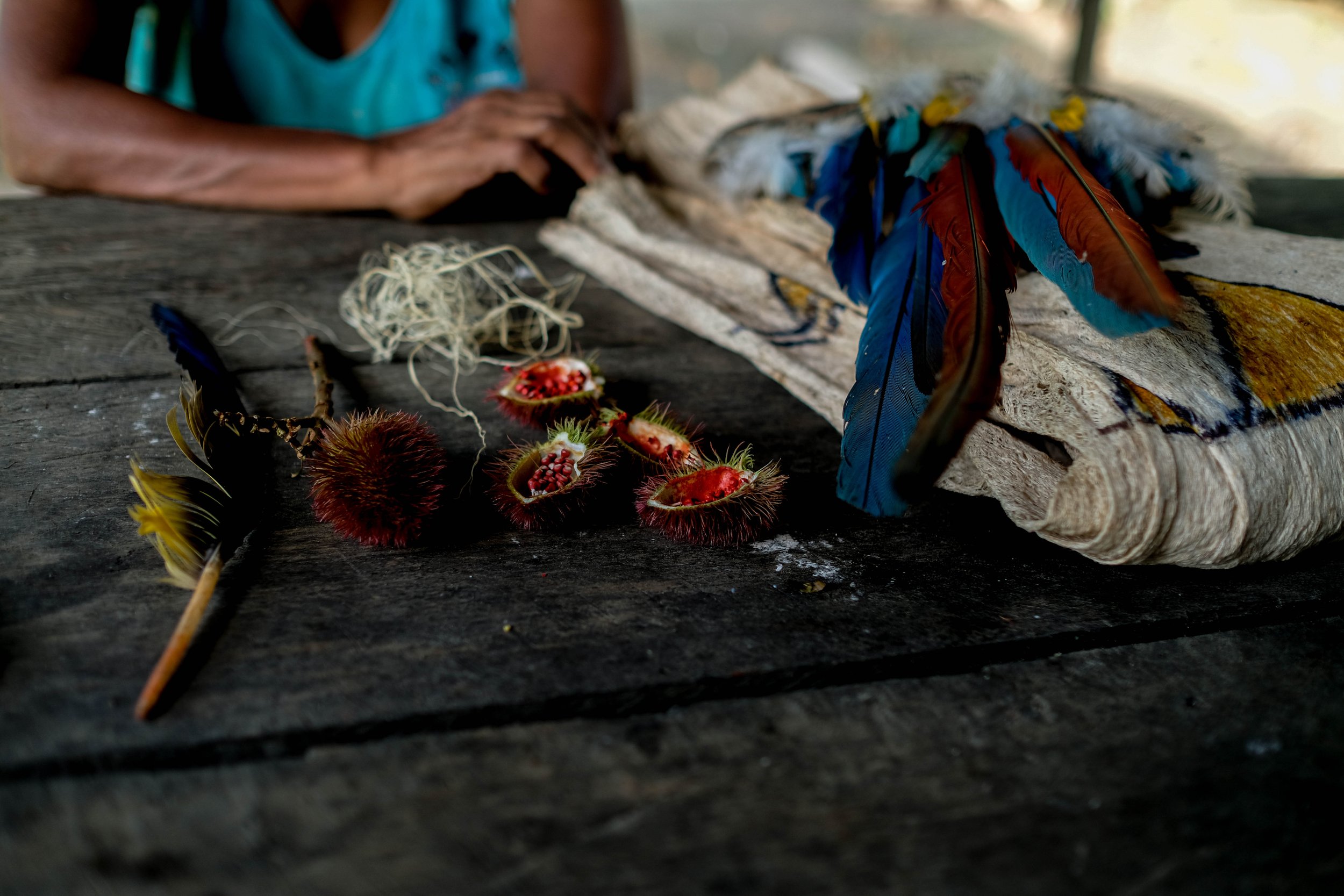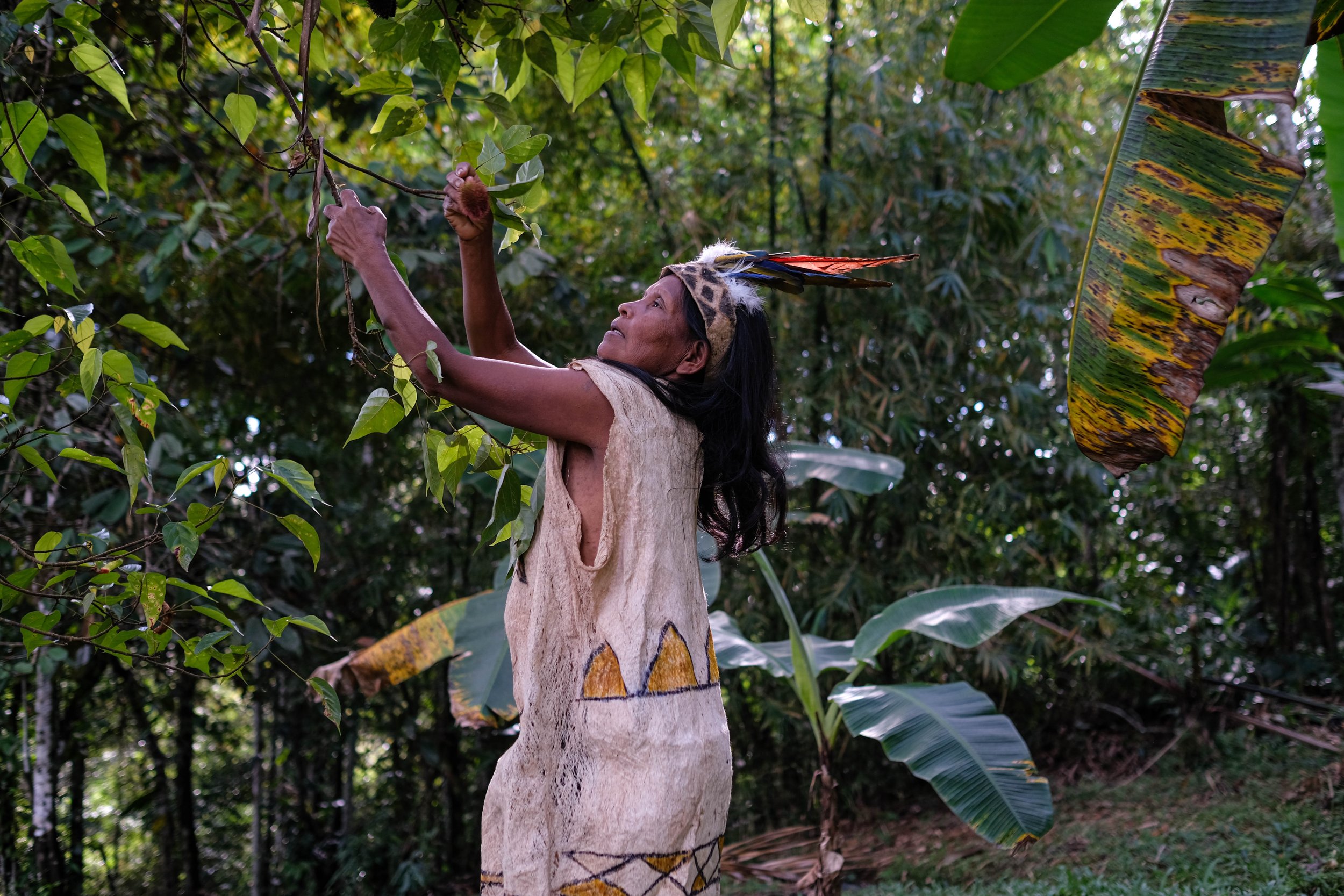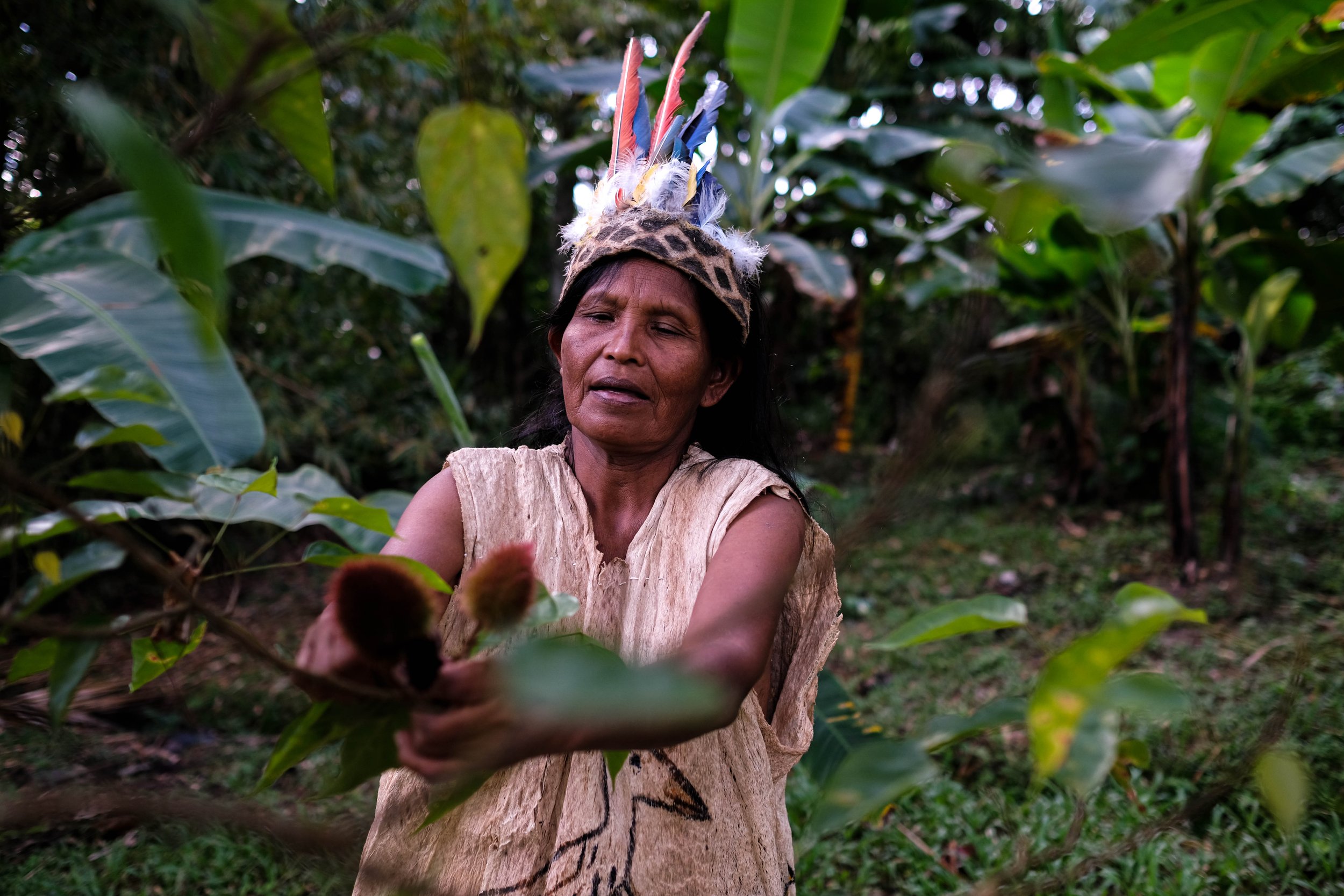The Ticuna women of the Colombian Amazon: sun, moon and Mother Earth
In the Colombian Amazon, women carry knowledge rooted in sun, moon, and earth.
“This majestic jungle is not ours; this belongs to Colombia, and we are servants of the world,” says Delfino Parente, a Ticuna leader.
Navigating through the Amazon River, floating green plants known as buchones are scattered through the river, accompanied by luscious mangrove trees, while the typical tropical jungle bushes, Renacos, with aerial roots that descend into the ground, open the way and welcome you to the Amazon basin, in heavy rain.
The trip to San Pedro de los Lagos is vibrant. It is two hours away from Leticia, Colombia and it is in the centre of the Yahuarcaca lagoon system, where one of the oldest indigenous communities resides, the Ticunas. The Ticuna people moved towards the banks of the great river during the colonial era. Its settlements are distributed around the Amacayacu National Natural Park, in Puerto Nariño, and near Leticia.
The Ticuna name, comes from their neighbour’s which means “black face” or “black body,” alluding to their custom of painting their skin black for protection and purification in rituals. These inhabitants of the Colombian Amazon live in the thick and resonant untouched jungle, in San Pedro de los Lagos, San Antonio Shelter.
The Ticuna community was founded more than 80 years ago, made up of 15 families, about 86 people, and 10 houses. Both men and women participate in traditional and economic activities such as fishing, hunting, agriculture and the craft trade. This imposing forest that favours the development of lush and dense vegetation, classified as the richest and most biodiverse on the planet, bases its economy mostly on the production of the chagra.
The chagra, is the main source of sustainable agriculture in the Ticuna spaces, transient or perennial crops are produced with a production period that is modified between 0 and more than 10 years, which are managed by families. These economic activities that are part of the Ticuna communities mean new income possibilities.
The location of the production of the chagra is chosen taking into account specific criteria such as the characteristics and the area of the land to be cultivated, its quality and access to water so that the crops can be watered or drained when necessary. In San Pedro, bananas - known as “bellacos” - and fariña, a powdered cassava flour considered a traditional base food that accompanies all your meals, are grown in chagras.
During the day Aldemar is a tour guide - for groups that travel to San Pedro - and a musician in the evenings. He explores the vastness of the forest daily. The trees guide him along the humid and deep path in which he moves freely to the rhythm of the whistles coming from the leaves in the Amazon. The rain and the bright sun alternate non-stop during the day.
When crossing the Colombian thicket and moving through the water you can see the immensity of nature, surrounded by trees that are 35 meters high which guide the natives through the forest. You can hear the howls of the Pachamama. There are also various types of birds and monkeys in the majestic jungle that can be seen very closely, every corner of this immaculate jungle is protected by a magical shield.
Mother Earth is the main authority within the Ticunas, she nourishes and protects them and from there the natives have always maintained a solid canvass of cultures and knowledge since it fills them with innumerable gifts for maintaining their ancient traditions.
Pachamama is followed by women in the order of who is leading the command in the community. Among them, they consent, empower themselves, and help each other especially during the days of the month when the moon explodes during its Lunar Cycle and enchants them with its spell.
The Women of the Moon, Tawemakû arü Geegù, strengthen their ties with nature, their bodies, the Moon, and the Earth. During this week of the month, you can see the closeness between the Ticunas and their jungle environment, they celebrate rites, stories are told and sometimes they wear the traditional costume, yanchama (tree bark) decorated with achiote vegetable dyes, traced with colored feathers or palm fringes. The Yanchama are adorned with wooden masks, necklaces, crowns, headbands with feathers, and seeds.
"Traditional medicine is the essence of this community, we complement it with modern medicine and in general combining them is important since in order to stay healthy we need both," says María Parente, second in command, following Matilde Parente, her mother.
The Women of the Moon, Tawemakû arü Geeg, highlight the importance of annato, a powerful source of vitamin A, anti-inflammatory and excellent home remedy useful for multiple treatments. María keeps ancestral traditions alive by resorting to painting the faces of women to overcome the discomforts produced during her Moon Cycle.
Annato is a rough and strong shell plant, with white walls inside, filled with bright red seeds that have an extraordinary colouring capacity, with a spicy, smokey, and slightly sweet taste. It grows in the density of the Amazon, helping them cope with heaviness, pain, insomnia, and weakness among other symptoms, produced during the days of the month in which the Women of the Moon, Tawemakû arü Geeg feel fragile.
The Ticunas have benefitted from the technological advances of modern society because they are part of it. They visit the area’s capital, Leticia, as they depend on it in order to maintain a good standard of living, health, recreation, communications, fun, cultural events, among other activities.
They receive influence from the outside world without forgetting their customs and ancestral traditions and at the same time feel more valuable in the middle of the forest. The youth are the most involved in interacting with the white men since they use mobiles, social networks, study in universities, and even undergo surgical processes when traditional medicine is not enough to overcome trauma.
Alexis Rufino Parente, Mechiiku in Ticuna, is 26 years old and has always lived between the jungle and the city. “From a young age, I started a jungle education surrounded by grandparents, shamans, midwives, and countless people from different ethnic groups with whom we share the territory. From them I learned to protect myself and survive in a world where everything is connected, like a network of wise people,” says Alexis.
Rufino studied Business Administration and Management, is a documentary photographer, and an indigenous researcher at the National University based in the Amazon. He works as General Manager of the “Semillas Ticuna Escuela de Selva” project and is a member of the multimedia and photographic production collective, “Aborigen,” made up of indigenous youth from the Colombian Amazon.
"Currently I address issues of climate change specifically from the Aboriginal people’s point of view. Highlighting the importance of our communities maintaining contact with the outside world, with cities and schools, in order to expand other areas of knowledge," Mechiiku says.
For Alexis, the education, knowledge, and experience acquired by different indigenous communities when they maintain contact with society, is a way to safeguard their forest by making people aware of their cultures, their languages, their good environmental practices, and their connections with nature.
At the same time, the new generations of The Ticunas and the Women of the Moon, Tawemakû arü Geeg, are going through the challenge of keeping their traditions alive whilst strengthening their relations with the surrounding society and surviving the modernity of the western world by exploring their environmental and economic sustainability through their ancestral practices.
The Ticunas of the Colombian Amazon and the new generations choose to continue living within the unshakable Amazonian shield of the magical jungle, building life and memories without the worries of humanity.
The Women of the Moon, Tawemakû arü Geeg, apply the teachings shared by teachers like Mary who is in charge of educating them on issues related to their bodies, the Sun, the Moon, and Mother Earth.
Published on Open Democracy November 18, 2019. English version: https://www.opendemocracy.net/en/democraciaabierta/ticuna-women-colombian-amazon-sun-moon-and-mother-earth/
Spanish version: https://www.opendemocracy.net/es/democraciaabierta-es/ticuna-women-colombian-amazon-sun-moon-and-mother-earth-es/
Portuguese version: https://www.opendemocracy.net/pt/mulheres-ticuna-da-amazonia-sol-lua-mae-terra/
This project was selected as a finalist in an international photography competition, recognizing its focus on Indigenous women and ancestral knowledge.














